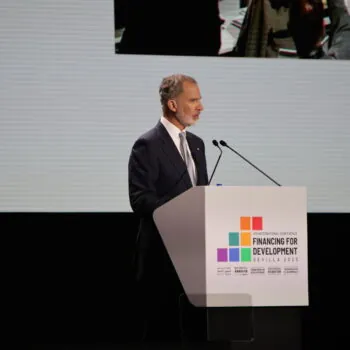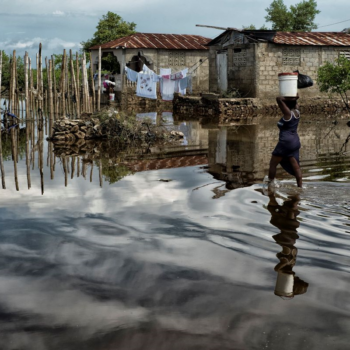This post is also available in Spanish here.
Lessons from LEDS LAC III Workshop
Development in Latin America is still a major priority for the region where addressing climate compatible and resilient development will be key to foster strong and equitable economies. Sharing practices and challenges amongst practitioners across the region can help to advance and accelerate the development of policies towards this aim. Though Latin America only contributes 9% of the total global greenhouse gas emissions, increases in consumption patterns associated with higher incomes and the rapid growth of urban cities represent a major challenge for the development of the region.
This week I was in Santiago, Chile, at the III Workshop on Low Emission Development Strategies for Latin America and the Caribbean LEDS LAC platform and found some very interesting practices. This blog shares some key themes that I took away from the event.
Finance as a major driver
The opening speech by Alicia Barcenas, head of ECLAC, highlighted the fundamental role of long term finance associated with infrastructure development and the need to go beyond the short term political decisions associated with government terms. Data from ECLAC can now show specific places where the impact of climate change will be felt. This provides opportunities to develop infrastructure in a resilient manner. The design of innovative policies to mobilise financial resources like the Green Climate Fund are essential.
Chile set the conversation with their recent Carbon Tax, which was launched in September. The tax applies to fixed sources of emissions, local pollutants and cars. It was very interesting to note this is about having a fair and equitable development keeping in mind the principle “who pollutes pays”. It was also good to see the Ministries of Finance and Environment working together and taking joint ownership. The Ministry of Finance described it as this, “hay que poner la billetera donde se pone la palabra” which in English translates to "put your money where your mouth is".
In other sessions the role of public budgets, taxes and cap and trade was discussed. One relevant point was the price per tonne of emissions in the case of Chile being $5 USD, in Mexico around $3 USD and the estimated recommended value by the United Nations being $25 USD. Regardless of the relatively low tax amounts per tonne this is a very important starting point, key will be to make sure that the revenues from these taxes are in fact invested towards low carbon development objectives.
I had the pleasure to lead one of the parallel sessions on National Financing Strategies talking about the need for a strategic approach to climate finance with a holistic view to bridge the gap between the design of climate change action plans, national budgeting and financial decision-making processes aligned with national development plans to overcome the mismatch between international and national resources. It was interesting to see the steps countries and research institutions are taking. Peru is identifying their key development, green and pilot project priorities; a study in Chile showed the challenges in identifying budget allocation to climate change; and Colombia’s integration of finance stakeholders as part of this process through its Climate Finance Committee SISCLIMA.
I really enjoyed a presentation from Banco BICE highlighting the scale of necessary financial flows for mitigation and adaptation where around 85% will come from the private sector and explaining project finance structures, the potential of using green bonds, the Green Climate Fund and the enabling conditions for financial institutions to take a bigger role in this transformation and overcome main barriers. However, during the discussions it was clear that more participation from the private sector is necessary and there’s still work to further raise awareness within the government sector and to go deeper in their understanding of the financial sector. Other sessions discussed the role of NAMAS with good examples from Costa Rica with coffee and the need to have standardized MRV methodologies per sector that could be easily adapted to country contexts.

Institutional arrangements and cross-sector collaboration
Many cases showed how having clear institutional arrangements and leadership from the top can really drive the development of LEDS and foster integrated solutions and collaboration from different ministries. In the case of Chile’s tax it was clear this was in part possible due to President Bachelet’s commitment to the topic and their target to reduce 20% of emissions by 2020. Other examples in the region with climate change laws like the cases of Mexico, Dominican Republic, Costa Rica allow the implementation of long term strategies that go beyond presidential mandates.
In the case of the Dominican Republic the National Development Strategy that incorporates low carbon development actions is hosted by the President thus aligning the different ministries to collaborate. In the case of Mexico the law and climate change strategy sets key responsibilities per sector and also allows for the identification of co-benefits in policies for example for more fuel efficient transport with health, competitiveness and green growth. It also helped in giving more independence to institutions such as INECC to conduct research and studies that reduce barriers for investments. It was noted that there’s still a lot to be done to incorporate the private sector in the design of policies despite having these institutional arrangements.The financial sector participation could help in particular with policies that conduct enabling environments, financial incentives and instruments such as funds that can help reduce barriers and leverage capital.
Sub national actors
Cities will play a very important role in LEDS in the Latin American region as more people move to urban centres. Huge challenges to develop in sustainable ways need to be overcome ranging from access to technical resources, mobilisation of finance and dealing with other immediate short term social and political considerations. Climate impacts have the potential to affect cities the most, for example in the case of Arequipa, Peru, a study showed the rain in February 2013 that caused huge damage with floods was heavier precisely in Arequipa due to high levels of particles in the air related to transport pollution. In Colombia, the Ministry of Environment is developing technical research nationally for different regions to assess the challenges and vulnerabilities engaging with local governments at initial stages so they can take ownership and develop their own strategies overcoming information barriers. Low carbon transport remains one of the main challenges for cities as the rate of car ownership is expected to increase by 80% with higher incomes in the region. Colombia is developing NAMAS for public transport and Mexico is developing policies to improve fuel efficiency in cars amongst other measures.
LEDS LAC going forward
Overall it was a very interactive event with space to discuss openly and share experiences. Participants were mostly from the government and one of the recommendations is to include more participation of the private sector and different ministries. Next LEDS LAC workshop will be held in the Dominican Republic in 2015, I look forward to it!


